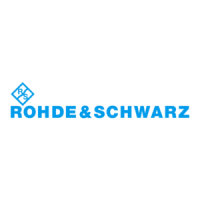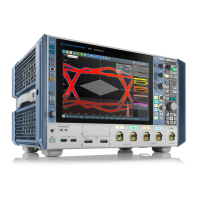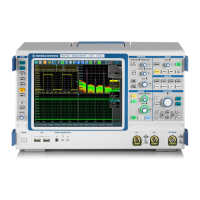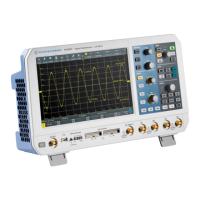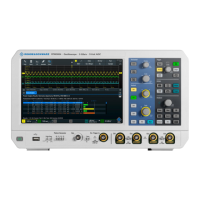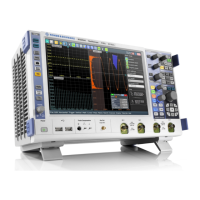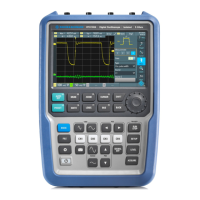Waveform analysis
R&S
®
RTE
305User Manual 1326.1032.02 ─ 20
Icon Description Usage/Comment, FormulaEditor expression
≥
greater or equal >=
More display additional keys
7.3.4.6 Math functions: FFT
Table 7-8: FFT (More keys)
Icon Description Usage/Comment, FormulaEditor expression
|FFT| magnitude of FFT value fftmag(x)
FFT (φ) FFT phase value fftphi(x)
FFT -dφ*df FFT group delay fftgroupdelay(x)
FFT (re) real part of FFT value fftre(x)
FFT (im) imag part of FFT value fftim(x)
7.3.4.7 Math functions: correlation
Table 7-9: Correlation (More keys)
Icon Description Usage/Comment, FormulaEdi-
tor expression
Cross correlation function of two waveforms
Measures the similarity of two waveforms as a function
of a time-lag applied to one of them.
Function limits the maximum record length to 4 MSa.
Two modes of normalization are supported: biased
and unbiased.
The length of the correlation buffer is N
0
+ N
1
–1 sam-
ples. The length of the first input signal is N
0
samples
and the length of the second signal is N
1
samples.
correlation(x1, x2, biased)
correlation(x1, x2, unbiased)
with x1 = waveform 1 and
x2 = waveform 2
correlation(x1, x2) performs an
unbiased correlation
Auto correlation
Used to find repeating patterns, for example, a peri-
odic signal obscured by noise.
The length of the auto correlation buffer is 2N –1 sam-
ples, if the length of the input signal is N samples.
Two modes of normalization are supported: biased
and unbiased.
autocorrelation(x, biased)
autocorrelation(x, unbiased)
with x = channel waveform
autocorrelation(x) performs an
unbiased autocorrelation
biased / unbiased normalization for correlation and
auto correlation
see above
Mathematic background for correlation:
Mathematics
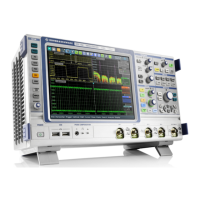
